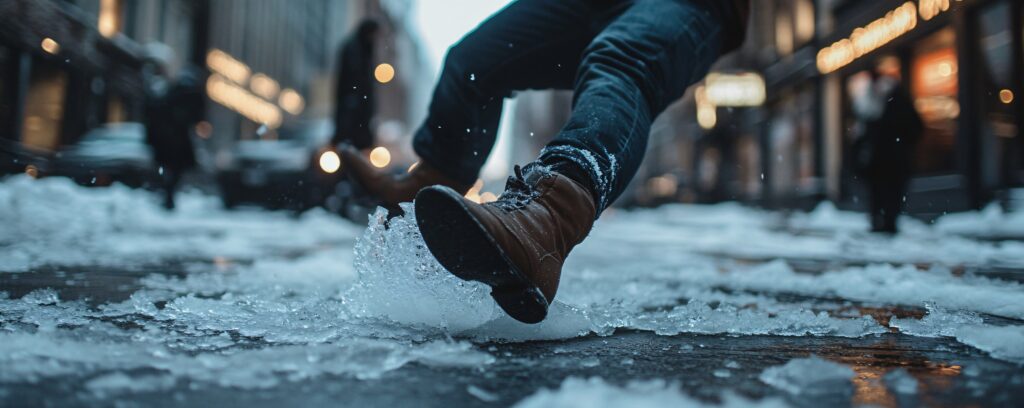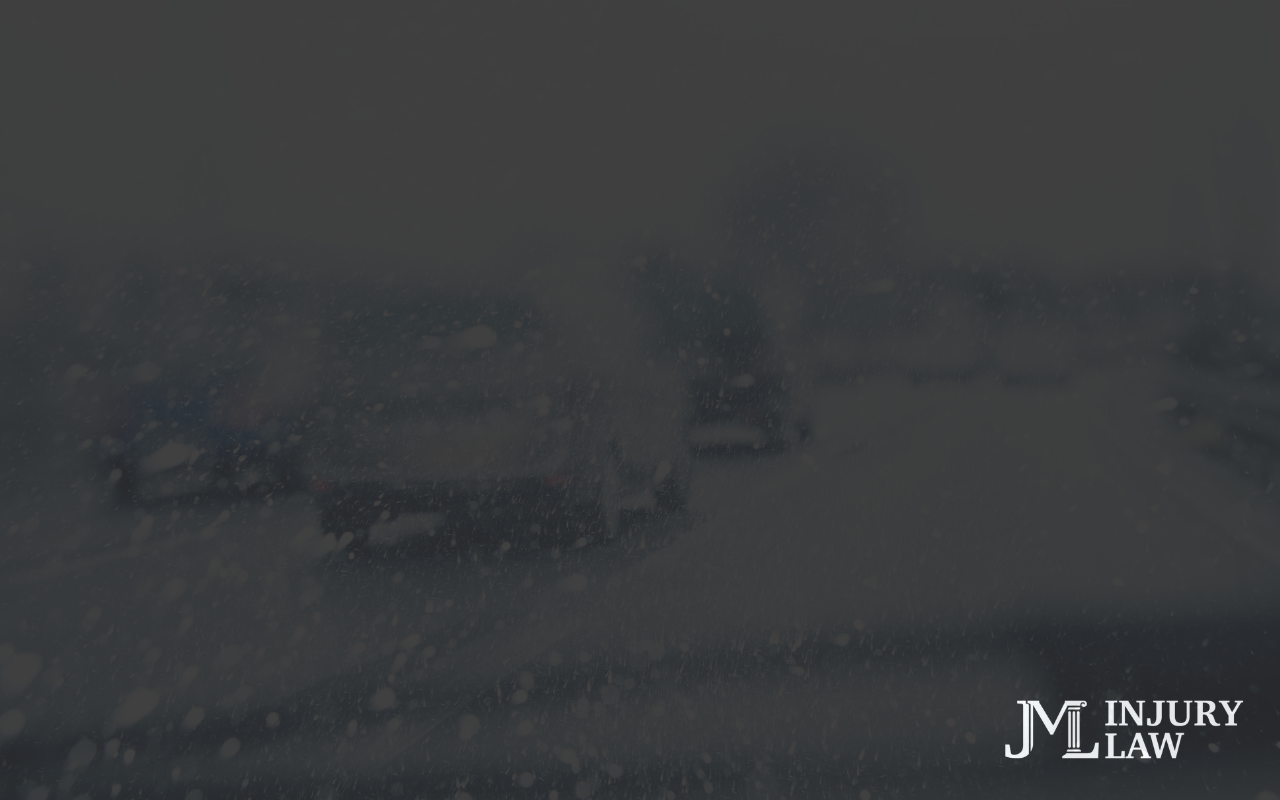When snow and ice blanket the Dallas-Fort Worth area, many residents aren’t just dealing with frozen windshields and delayed plans—they’re facing real risks to their safety. Inclement weather, especially snow storms, brings a dramatic increase in traffic accidents and injuries across North Texas. For an area unaccustomed to persistent winter conditions, the results can be catastrophic.
At JML Injury Law, we’ve seen firsthand how winter weather disasters leave individuals and families struggling to recover from life-changing injuries. Beyond the cold and inconvenience, snow storms in the DFW area create concerning hazards that everyone should understand.
Why Are Snow Storms in DFW Particularly Dangerous?
Unlike northern states equipped to handle regular snow and ice, Texas historically faces significant challenges in responding to inclement winter conditions. Here’s what makes snow storms in the Dallas-Fort Worth area uniquely hazardous:
1. Lack of Preparation
Snowstorms in DFW are rare but not unheard of, which leaves infrastructure and drivers inadequately prepared. Texas cities, including Dallas and Fort Worth, often have limited snow plows, de-icing resources, or sand trucks to address slick roads. This means highways, intersections, and overpasses frequently remain untreated.
2. Drivers Unfamiliar with Winter Conditions
Driving in snow or ice requires different skills than navigating dry or rainy weather. Unfortunately, many Texans lack experience in adjusting their driving habits during icy conditions, leading to an uptick in dangerous behaviors, such as:
- Driving too fast for road conditions
- Following other vehicles too closely
- Panicking and making abrupt stops that cause skidding
3. Black Ice and Frozen Overpasses
Black ice hides on the road’s surface, invisible to even the most attentive drivers. Overpasses and bridges are especially susceptible to these thin layers of ice, as they freeze faster due to the lack of insulation below them. These forgotten hotspots often result in multi-car pile-ups and loss of vehicle control.
4. Poor Visibility
Heavy snow, freezing rain, and fog can dramatically reduce visibility, making it difficult to see traffic lights, signs, other vehicles, or pedestrians. The combination of poor visibility and slick roads creates a perfect storm for accidents.
5. Pedestrian Risks
Snow and ice also increase the likelihood of pedestrian slip-and-fall injuries. Whether it’s on a parking lot coated with black ice, a slick driveway, or an unmaintained sidewalk, these hazards can lead to fractures, head trauma, and other serious injuries.

A Surge in Accidents and Injuries
When snow and ice hit DFW, the risks escalate across the region. From highways and intersections to walkways and public spaces, the frequency of accidents rises sharply. The statistics paint a sobering picture of what happens during winter storms in this area.
Increase in Car Crashes
During significant snow storms, car accident rates soar in Texas. The Texas Department of Transportation (TxDOT) reports that icy roads contribute to thousands of crashes annually. Unfortunately, many of these accidents result in severe injuries, particularly on high-speed highways such as I-35, I-45, and I-20 that run through or near the Dallas-Fort Worth region. The consequences include whiplash, broken bones, traumatic brain injuries, and, tragically, fatalities.
Slip-and-Fall Injuries
Snow doesn’t just create treacherous roads—it also turns sidewalks, parking lots, and porches into danger zones. Each year, icy conditions in DFW lead to broken ankles, hip injuries, and even spine trauma from falls. These types of accidents are especially common among older individuals, who face greater risks of long-term complications.
Commercial Truck Accidents
The Dallas-Fort Worth area is a key hub for commercial trucking, with an extensive network of shipping routes moving goods across the state and country. Yet, trucks already carrying significant weight struggle even more to stop or maneuver safely on icy highways. These multi-ton vehicles often become central to chain-reaction collisions that leave passenger cars severely damaged and their occupants gravely injured.
Workplace Injuries
Essential workers, such as delivery drivers, construction workers, and emergency responders, face additional risks during snow emergencies. Slippery surfaces on jobsites, poorly maintained fleet vehicles, and exposure to winter weather hazards significantly increase the likelihood of occupational injuries.
Who’s Responsible for Accidents in Inclement Weather?
When an accident occurs during a snowstorm, the legal question of liability may seem complex. Many people assume weather conditions are solely to blame, but in reality, other factors often play a role.
Driver Negligence
Drivers in Texas are legally required to exercise caution appropriate to the road conditions. If a driver fails to slow down, maintain distance, or adapt to ice-covered roads, they could be held responsible for a resulting accident.
Property Owners’ Responsibility
Property owners have a duty of care to maintain safe conditions on their premises. This means clearing walkways of snow or ice and preventing known hazards. If a property owner neglects this responsibility and someone slips, they can be held liable for resulting injuries.
Commercial Entities and Negligence
Trucking companies, rideshare businesses, and employers hold particular responsibilities during snow storms. Negligence—like sending out poorly maintained vehicles, failing to outfit fleets with snow tires, or pressuring employees to work in unsafe conditions—can create liability for these organizations.
Preventing Winter Weather Accidents
While accidents are sometimes unavoidable, there are precautions you can take to help stay safe during a DFW snowstorm.
For Drivers
- Slow down and drive below the speed limit when roads are icy.
- Leave extra space between your car and others.
- Avoid sudden movements, such as abrupt braking or fast steering, to prevent skidding.
- Be cautious on bridges or overpasses, as they freeze faster than other roads.
- Confirm your tires are winter-ready and have sufficient tread.
For Pedestrians
- Walk slowly and take small steps, especially on icy sidewalks or roads.
- Wear shoes with good traction.
- Avoid using stairs or ramps until they’ve been cleared and salted.
- Report risky conditions, such as unmaintained sidewalks, to property management.
For Property Owners
- Shovel all walkways promptly and apply salt or sand to prevent ice buildup.
- Keep entrances and exits clear.
- Monitor parking lots and stairways for winter hazards.
When Accidents Happen, JML Injury Law is Here to Help
If you’ve been injured in an accident caused by inclement weather, you don’t have to face the aftermath alone. At JML Injury Law, we understand the stress, pain, and financial consequences these situations bring. That’s why we fight fiercely to protect the rights of individuals and families in the Dallas-Fort Worth area.
When you work with us, you gain experienced advocates dedicated to securing the compensation you deserve. Whether it’s recovering medical costs, lost wages, or damages for pain and suffering, we make your case—and your recovery—our top priority.
Injured? Contact JML Injury Law Today
Don’t wait to get the help you need. If you or a loved one has been injured in an accident during inclement weather, contact us today for immediate assistance. We offer free initial consultations so you can understand your legal options with no obligation.
Snowstorms may be beyond your control—but getting justice and compensation for your injuries doesn’t have to be. JML Injury Law is here to stand by your side.



